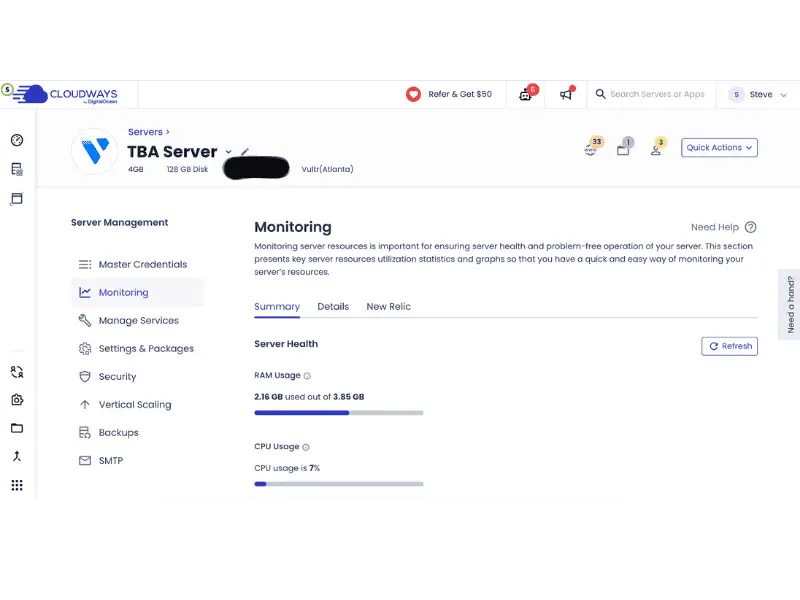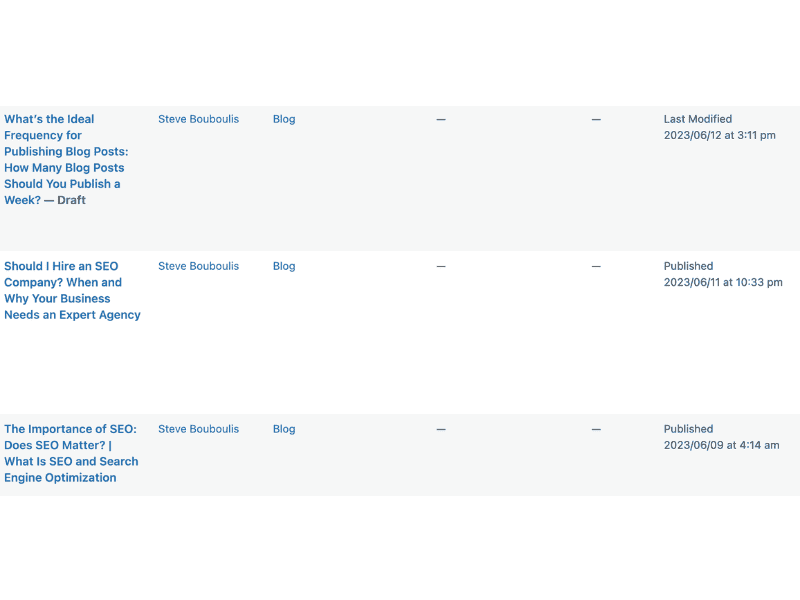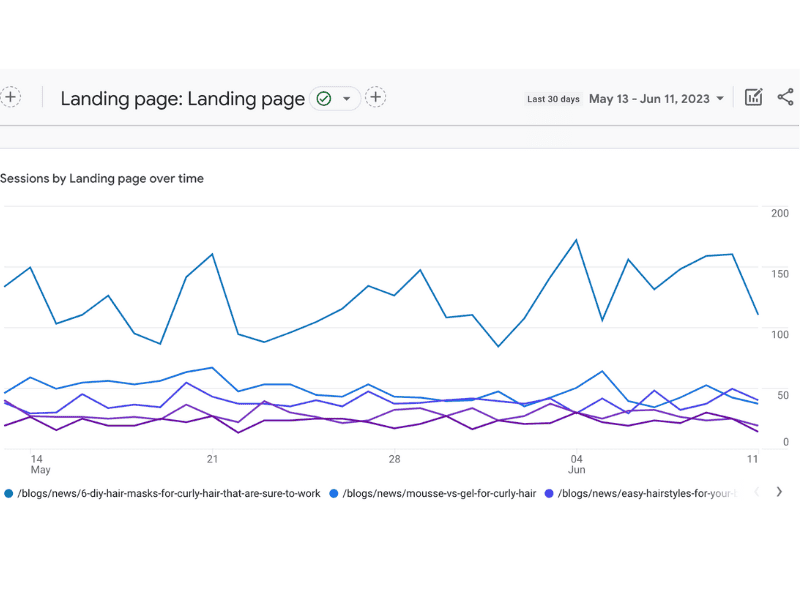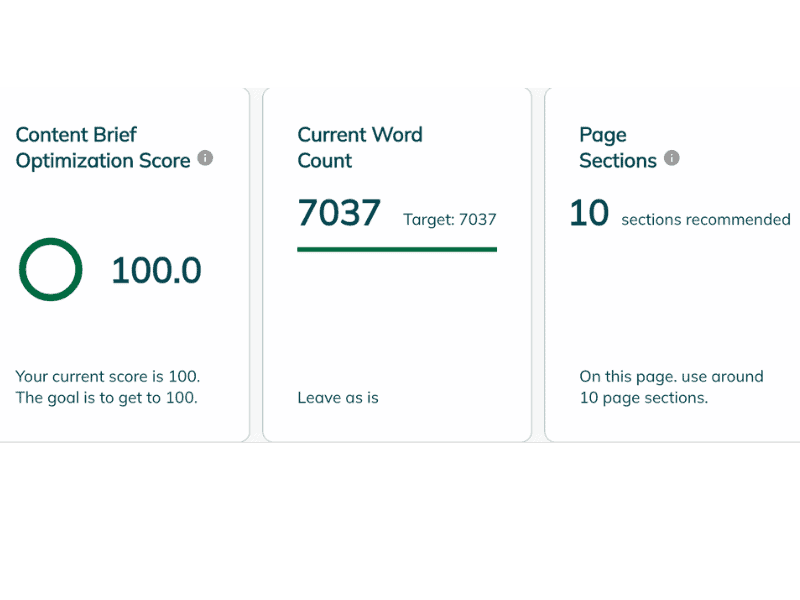The number of blog posts you should create weekly depends on several factors, including how new your website or blog is, your content goals, time and resources, and your niche or audience. But despite these dependencies, some basic blogging guidelines can help you determine the best publishing schedule for you and your business.
Before we dive into answers, let’s recap several essential blogging basics.
Why is Blog Writing Important For Your Business?
Blogging is an essential marketing tool to help you connect with potential customers, build your brand, and showcase your expertise. Several key benefits of blogging for your business include:
- Increased visibility and traffic: Blogging can help your business get found online by improving your search engine rankings. Creating high-quality, relevant content optimized for keywords related to your business can attract more traffic to your website.
- Thought leadership and authority: By sharing your expertise and insights on your blog, you can establish your business as a thought leader in your industry. This can help build trust and credibility with your audience, leading to more business opportunities.
- Improved customer relationships: Blogging allows you to communicate directly with and build relationships with your customers. Creating valuable and informative content shows your customers that you care about their needs and are committed to helping them succeed.
- Increased social media engagement: Sharing your blog posts on social media can help you connect with your audience and drive more engagement. By creating shareable content that’s relevant and interesting, you can increase your reach and grow your social media following.
- Cost-effective marketing: Blogging is a cost-effective way to promote your business and reach your target audience. Unlike traditional advertising methods, which can be expensive and ineffective, blogging lets you get your audience with valuable content they’re actively searching for.
What’s the Best Way to Start?

Starting a blog can be an excellent way to establish yourself as an expert in your field and boost your site’s search engine optimization (SEO).
The following steps can help you get started:
Step 1: Find your Niche.
Determine the topic or niche that you want to focus on for your blog. This should be something you’re passionate about and knowledgeable in, and that has the potential to attract and engage a specific audience.
Step 2: Choose a Platform.
Several blogging platforms are available, including WordPress, Squarespace, and Wix. Choose a forum that’s easy to use, flexible, and meets your specific needs and budget.
Step 3: Select a Domain Name.
Your domain name is your website address, and choosing a name that’s memorable, easy to spell, and reflects your brand or niche is essential.
Step 4: Set Up Hosting.
Hosting is the service that allows your blog to be accessible online. Choose a hosting provider that’s reliable, affordable, and offers good customer support.

Step 5: Think About Your Web Design.
Choose a design or theme for your blog that’s visually appealing, user-friendly, and reflects your brand or niche.
Step 6: Create a Content Plan.
Develop a plan for the type of content you want to create and how often you wish to publish. This will help you stay organized and consistent with your blogging efforts.
Step 7: Start Creating Content.
Begin creating high-quality content that’s informative, engaging, and relevant to your audience. Consider using a variety of formats, such as blog posts, videos, podcasts, and infographics.
Step 8: Promote Your Blog.
Share your blog on social media, email newsletters, and other marketing channels to drive traffic and build your audience.
How Many Blogs To Publish Each Week: Factors to Consider
Of course, having the resources, know-how, and capacity to publish multiple blogs each week would be great. But two crucial adages emerge here: “Work smarter, not harder” and “quality over quantity.” There’s no sense in pushing yourself to publish multiple weekly blogs that may be less quality than posting fewer quality blogs.
Let’s look at a few critical questions to help you determine how much content you should publish.
What are your blog content goals? Your content marketing strategy and business objectives should determine the frequency of blog posts. What do you hope readers gain from your blog posts? Build your brand name? Increase the number of referrals? Increase email subscriptions? Boost organic traffic?
The Moz team cites the example of their Whiteboard Friday series as an illustration. It can make sense for you to create content once a week or more than once a week to increase the number of subscribers and strengthen their association with your business. Yet, as Moz explains, you might achieve your objectives with blog content published once per day, once a month, or a few times a month.
HubSpot recommends that bloggers want to increase their organic search volume with new content more frequently. This is because your site’s chances of ranking higher in search results increase proportionately with the number of posts it has.
On the other hand, if you aim to increase brand awareness and online presence, you might not need to push out content once a day or weekly. Instead, it would help if you concentrated on fewer postings that are more substantial and that build on the voice and values associated with your company’s brand. This strategy has been known to work for several blogs.
Read about: Should I Hire an SEO Company? When and Why Your Business Needs an Expert Agency

- How will you reach our audience and readers?
Before you start a blog, give some thought to the people who will read it and have a decent notion of how to reach them. Put an end to whatever you’re doing and figure out who your target demographic is as soon as possible.
When it comes to your audience, how frequently do they read the content you produce? If most of your readers are medical professionals, their busy schedules might make keeping up with daily posts a little too cumbersome. It’s possible that once or twice a week would be sufficient.
However, if you have a highly engaged audience, which consists of active readers on blogs, email, and social media, a daily or semi-weekly blog could feed their demand for material and keep them coming back for more.
- What tools and resources do you need to help me publish blogs?
When you commit to a publishing schedule, it is important to evaluate the members of your blog team and establish the extent to which each individual can contribute.
- The number of blog writers
The number of people on your writing and editing staff will be among the most critical factors impacting your blogging frequency. For example, posting new content daily will quickly get stressful and challenging if you’re on a one-person team.
- The amount of work time available
Research by Orbit Media found that some bloggers write an article between two and three hours. But remember that the most successful bloggers put in more than six hours of work when they write a single blog article.
- Publishing capacity
You also need to ensure that your content review process and the timelines or resources you will need to have content authorized before posting are accounted for in your planning.
- Tip: Consider Smart Shortcuts
There are some savvy ways to use your existing content to produce new blogs or resources, including: quickly
- Updating outdated blog posts
- Creating many entries covering a variety of related but distinct issues
- Putting more emphasis on material contributed by users
- Collaborating with independent consultants or contributors from the outside
- Making contact with potential guest blogger
You can try other forms of content marketing, too. For example, data has shown that videos can help improve lead generation.
Read about: What are the 4 Important Stages in SEO?
When it comes to blog posts, which is better: Quality or quantity?
Even though the statistics demonstrate that the number of blog posts published is more important than their quality, the success of your blog will not necessarily depend on either factor alone. It’s more of a question of striking the right balance between the two.
It is important to remember that readers are more likely to share content that is helpful to them. More views of the piece may result from more people sharing it. Better search rankings come from having more views and more social shares.
The poll by Orbit Media showed that blog posts are getting more in-depth, with an average of 1,269 words per entry. And bloggers sharing lengthier content tend to have more substantial returns, with articles over 3,000 words having the most significant results overall. But writing those wordy blogs takes time, so you will only see them published occasionally during the week.
What about Google? Even if publishing more may increase the likelihood of one of your pieces of content being found in search results, Google is now placing a greater emphasis on factors such as the authority of the content and its relevance.
Also, postings published frequently but of poor quality will not likely result in new email subscribers. Spending more time on fewer but more in-depth blogs may be more beneficial to your marketing goals in the long run.
Once blog publication starts, should it stay consistent?
When it comes to content marketing, consistency is critical. It is essential to maintain consistency to grow a base of readers or subscribers.
In addition, maintaining a regular publishing schedule will be of assistance to you when it comes to developing your authority in the eyes of search engines.
Keeping to a consistent posting schedule might also assist you in measuring and keeping track of your achievements. Consistency is vital when determining the appropriate posting frequency for your needs.
The results of a poll conducted by Orbit Media about the frequency with which people write to their blogs and their level of success.
Should metrics be tracked regularly?

Keeping track of your metrics is the most important thing you can do to determine the optimal posting frequency for your blog.
Regularly monitor your audience’s engagement and conversion rates using Google Analytics and look for changes. Check the performance of your organic search results using Google Search Console.
Do you discover a difference if you increase the number of times you blog from once to twice monthly? And what will happen if you reduce the number of posts you make?
If you increase the frequency of your posts, you will likely notice an increase in the traffic and engagement you receive. But this is only the case for some sites and every readership, so you should pay attention to your data and make adjustments as necessary.
Remember to consider your return on investment (ROI), as well. Considering the amount of work required for each blog post, is it worthwhile in terms of how a blog contributes to the more significant objectives of your firm, such as leads, appointment form fills, sales, and so on?
How Does Blog Frequency Help Your Website?
Posting more frequently can bring several benefits, including increased traffic, improved SEO, more opportunities to engage with readers, and increased brand awareness.
Increased website traffic
When you publish more frequently, you give your audience more reasons to visit your website. Each blog is an opportunity to attract new visitors to your website and keep your existing readers returning. In addition, with each post, you increase the likelihood of ranking for additional keywords in search engines, which can lead to more organic traffic.
Improved SEO
Frequent posting can improve your website’s search engine optimization (SEO) by providing fresh, relevant content that search engines can index. Search engines favor websites that regularly update their content, and posting more frequently can help you stay ahead of the competition. Additionally, consistent posting can lead to more internal links, which can help with overall site structure and SEO.

More audience engagement opportunities
Posting more frequently gives bloggers more opportunities to engage with their readers. You can ask for feedback, answer questions, and encourage discussion in your comments section or social media. This engagement can help build a loyal following and turn readers into customers or clients.
Increased brand awareness
Posting more frequently can help increase your brand awareness by keeping the brand top of your mind. People who see your posts regularly are likelier to remember and associate your brand with the topics you cover. This can lead to increased recognition and trust, ultimately driving more business.
Established authority
Daily posting can help you establish yourself as an authority in your industry or niche. When you consistently publish high-quality content, readers will begin to view you as a knowledgeable source of information. This can help bloggers build their reputation and credibility, leading to more opportunities and higher-paying clients.
Can Blogging Too Frequently Be Harmful?
Posting too frequently, like two or four new articles per week or, in some cases, per day, can lead to various negative consequences for bloggers, their blogs, and their audience. First and foremost, creating content less frequently can lead to lower-quality content. Pay more attention to essential tasks such as research, editing, and fact-checking when churning out content to meet a posting schedule. As a result, your readers may lose interest in your blog if the content is valuable and engaging.
In addition to decreased quality, frequent posting can also lead to burnout. When you spend less time creating content, you may pay attention to other essential tasks or hobbies, leading to exhaustion and stress. Burnout can have long-lasting effects, such as reduced creativity and motivation, negatively impacting overall well-being.
Another potential drawback of posting too frequently is decreased engagement with your audience. When you flood your readers’ feeds with less content, they may feel overwhelmed or disinterested, reducing attention and interest in your blog. Additionally, overwhelming readers with too much information can cause them to disengage or unsubscribe from your blog.
What Are the Benefits of Bloggers Uploading Posts Less Frequently?
Instead of posting once or twice a week, bloggers should note that posting less frequently can lead to increased quality, more time for research and planning, more time for other business tasks, and increased reader anticipation. By taking the time to craft well-researched, thoughtful content, blogs can establish themselves as quality source of information in your niche.
Better content quality
When you post less frequently, you have more time to focus on creating high-quality content that is well-researched, thought-provoking, and informative. This can help you establish yourself as a quality source of information in your niche and attract a more engaged and loyal audience.
More time for research and planning
Posting less frequently instead of one to two times a week gives you more time to research and plan your content, resulting in more relevant, timely, and valuable information for your readers. It lets you be more strategic in creating content and ensure your blog aligns with your business goals and objectives.
More time for other business tasks
When you’re not constantly churning out blog posts, you have more time to focus on other essential business tasks, such as marketing, networking, and product development. It can help your business grow and achieve long-term success.
Increased reader anticipation
When you post less often, your readers may anticipate and look forward to your next post, increasing their chances of reading and engaging. It can help you build a loyal and engaged audience over time.
What Are the Drawbacks of Uploading Blog Content Too Infrequently?
Posting too infrequently can lead to decreased traffic, reduced SEO benefits, decreased engagement, and reduced brand awareness. When you post more often, your readers may remember your blog or turn to other sources for information.
Decreased traffic
When you don’t post often enough, your traffic may decrease over time, as your readers may forget about your blog or turn to other sources for information. It can negatively affect your blog’s search engine ranking, making it harder for new readers to find your content.
Reduced SEO benefits
Blogging less frequently can reduce SEO benefits, as search engines prioritize fresh and relevant content. When you don’t post often enough, your website may be seen as less relevant, resulting in lower search engine rankings and fewer clicks.
Decreased engagement
If you’re not posting often enough, your readers may lose interest in your blog and stop engaging with your content. It can lead to decreased comments, social media shares, and overall engagement, making it harder to build a loyal and engaged audience.
Reduced brand awareness
Building and maintaining brand awareness can be easier if you’re consistently posting content. By blogging less frequently, you may use opportunities to reach new readers and establish your brand as a trusted and valuable resource in your niche.
How To Find the Right Balance
Analyzing your website analytics is a crucial first step in finding the right posting balance. By examining your traffic patterns, you can identify when your site is busiest and engagement is highest. This information can help you determine when to publish your blog to ensure maximum reach and engagement. Additionally, pay attention to the bounce rate on your site, which indicates how many visitors leave your site after only viewing one page. If your bounce rate is high, your content overwhelms your audience, and you may need to adjust your posting frequency.
Testing different posting schedules is another way to find the right balance. Consider posting at different times of day, on other days of the week, and with varying content types. Track the engagement and response to each post to determine which schedule generates the most interest and interaction from your audience.
Lastly, seeking feedback from your readers is an excellent way to gauge whether you are blogging too frequently or not enough. Encourage your audience to share their thoughts and opinions on your content, including how often they want to hear from you. Take this feedback seriously, and adjust your posting schedule accordingly. Remember, blogging is all about the audience.
Ultimately, finding the right blogging balance will require some experimentation and patience. However, using these strategies, you can better understand your audience’s preferences and create a blogging schedule that maximizes engagement and meets your content goals.
Examples of Successful Blogs with Strong Blogging Strategies
Neil Patel
Neil Patel is a famous digital marketing expert and the founder of NeilPatel.com. He publishes top-quality, in-depth blog posts that provide valuable insights and tips for marketers. He posts once a week, typically on Tuesdays.
Pat Flynn
Pat Flynn founded Smart Passive Income, a blog that helps entrepreneurs and startup owners build successful online businesses. He posts once a week, typically on Wednesdays, and also creates podcast episodes and YouTube videos.
Buffer
Buffer is a social media scheduling tool running a popular blog focused on social media marketing. They publish several times a week, typically on weekdays, and cover various topics related to social media.
Brian Dean
Brian Dean founded Backlinko, a blog that provides actionable SEO advice for marketers and website owners. He publishes once a month, but his blog posts are highly in-depth and provide valuable insights and strategies for improving your website’s search engine rankings.
Copyblogger
Copyblogger is a popular blog focused on content marketing and copywriting. They publish several times a week and cover a wide range of topics related to content marketing, including writing, SEO, and social media.
These successful bloggers have found a posting frequency that works for them, and they prioritize quality over quantity when it comes to their content. By creating valuable and informative blog posts, they have built loyal audiences and established themselves as thought leaders in their respective niches. You, too, can and should develop a strategy that works for you.
How to Build Blogging into Your Content Marketing Strategy
Like other aspects of content marketing, the frequency you post on your blog should depend on several factors. Yes, whether you decide to post two to six times per week or even per day, or once a month is up to you. You should, however, consider all the factors mentioned above and develop a good strategy. Finding the right balance between posting too frequently, like daily posts, and too infrequently can be challenging, but it’s essential for the success of your blog.
By analyzing your website analytics, testing different posting schedules, and seeking feedback from your readers, you can determine the optimal posting frequency for your blog. Remember, the most crucial factor in blogging should be to focus on quality content that provides value to your readers.



